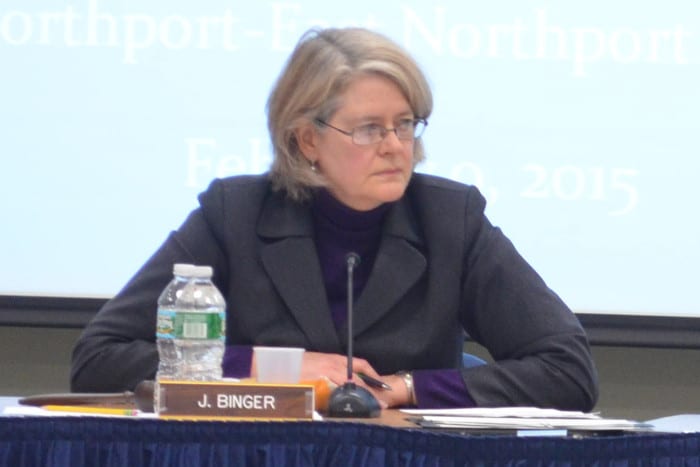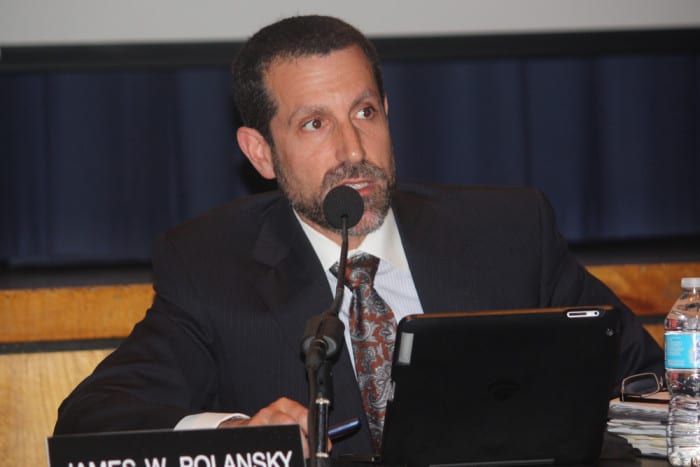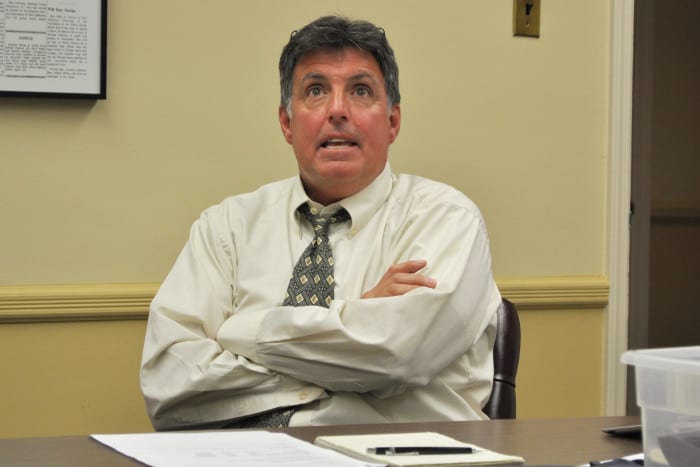Calling upon previous instructions to be careful with Smithtown’s cash, two town board members voted against promoting two town employees at a public meeting Tuesday, though it was not enough to stop the raises.
Town Comptroller Donald Musgnug told the board in a special meeting last month that it must “tighten its belt” to protect its bond rating as the town goes out for bonding later this year to fund certain capital projects. Tuesday’s meeting agenda included two promotions that were ultimately approved by a vote of 3-2, but they were met with concern from Councilman Bob Creighton (R), who called upon Musgnug’s previous warning.
“We had Mr. Musgnug in here recently, and now I have a little bit of a problem,” said Creighton, who voted against the promotions along with Councilman Ed Wehrheim (R). “He tells us we shouldn’t be doing more promotions, and here it is, we have two more on here.”
The promotions ultimately went to Traffic Safety Department employees Dyanne Musmacker, to the position of senior clerk typist at $20.45 per hour, and Anthony R. Cannone, to the provisional position of traffic engineer at $54.07 per hour — both effective July 20. The two promotions were the only items Creighton and Wehrheim voted against in a list of 10 other personnel matters before the Smithtown Town Board on Tuesday.
Town Supervisor Pat Vecchio (R) defended the promotions, saying money was already allocated at the beginning of budget season for such raises.
“When the department asked for those promotions in September of 2014, I told them we would consider those promotions and that I would put the money in the budget effective July 1,” Vecchio said. “So there’s money already accounted for.”
Vecchio also said such a practice, allocating money in the budget for future raises, was not out of character for the town.
Creighton, however, was against the practice on the grounds of Musgnug’s presentation before the Town Board in which he expressed concern over the town’s financial future.
“My recommendation is that we fill only essential positions, promote from within where possible and leave non-essential positions vacant,” Musgnug said in his June 23 presentation on the status of the 2015 Smithtown budget. “The message is that we must continue to contain what we can control — expenditures.”
Musgnug said the town’s financial standing was ultimately on the line come the end of the year as it considers bonding for projects, and potentially faces a lowered rating.
“The rating agencies would like to see a structurally balanced budget,” he said at the June special meeting. “As we approach the 2016 budget cycle, the closer we are to breakeven in 2015 means less adjustments for 2016.”










